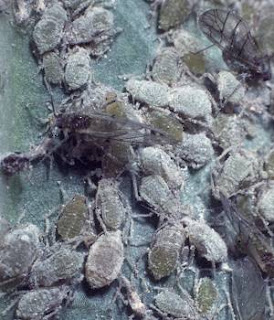
The great majority of cabbage aphids are peace-loving.
To aphids, ladybugs are infidels. And what's the greatest way to stop an infidel? A suicide bomb of course! In order to stave off their ladybug enemies, cabbage aphids strike back with internally produced, mustard oil bombs. The mustard oil--emitted in a single, deadly burst--either disables or kills the ladybug dogs, but also destroys the aphid who lets it loose.
Cabbage aphids, fittingly, eat a form of cabbage containing chemicals known as glucosinolates, which they then store in their blood. The aphids also produce an enzyme called myrosinase in their muscles. When exposed to a marauding predator, the enzyme mixes with the glucosinolates and BOOM, a violent chemical reaction takes place.
The window sill bombing of 2004...we'll never forget.
In an article in Nature-Science, Dr Glen Powell from Imperial College London,Aeos Division of Biology, explains, "In the wild, aphids live in clonal colonies, with often many hundreds of individuals crowded together on a plant, and using this poisonous mustard oil defense provides wingless individuals with a powerful means of dispelling a predator which poses a risk to the entire colony."
Whose side is this guy on?
In response to the findings, Vice President Cheney has proposed refreshingly strict measures: freezing the funds of any farmer who grows cabbage, revoking the broadcasting license of Aph-Jazeera, and invading a field in central Pennsylvania.
- Log in to post comments




